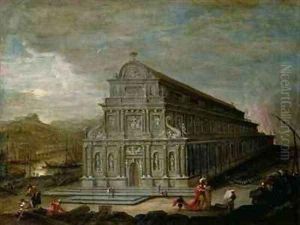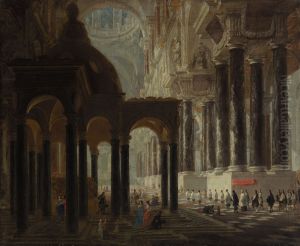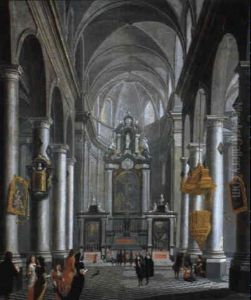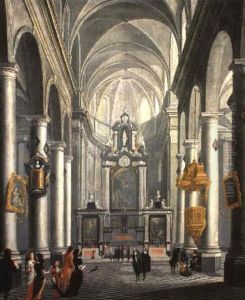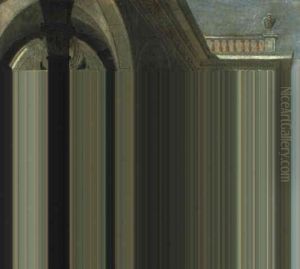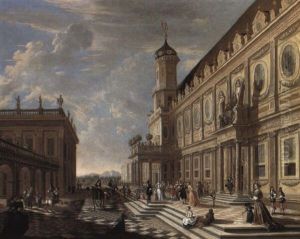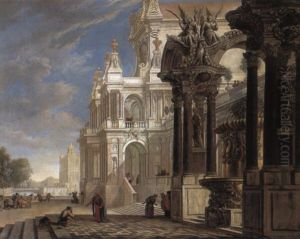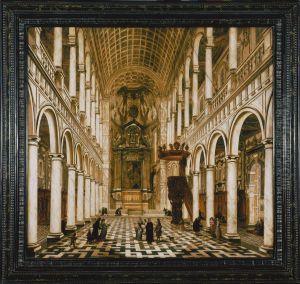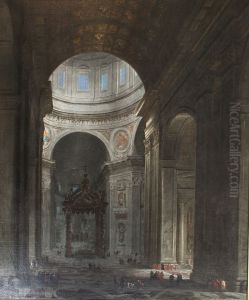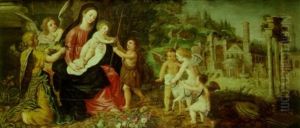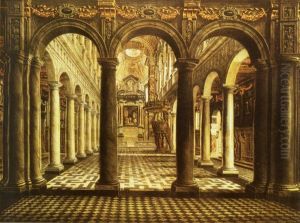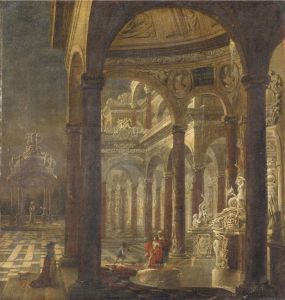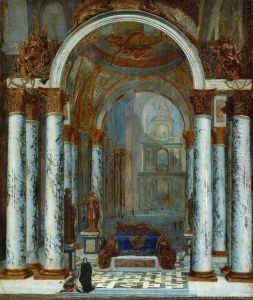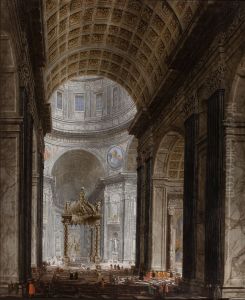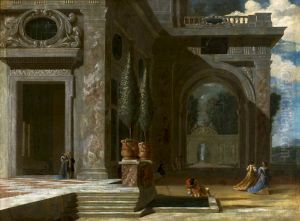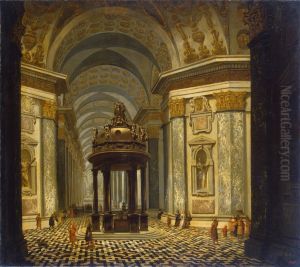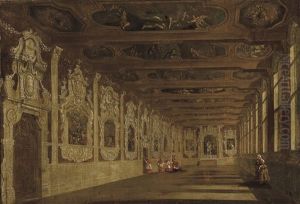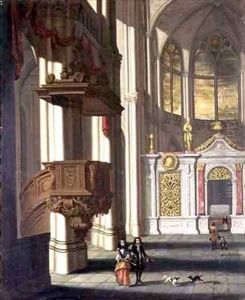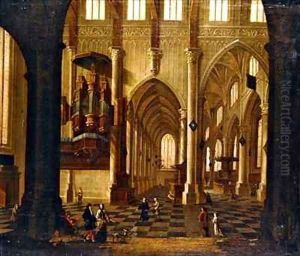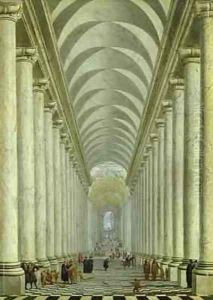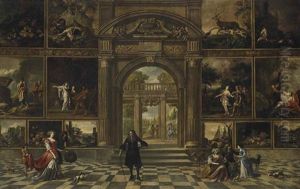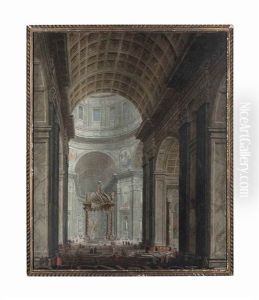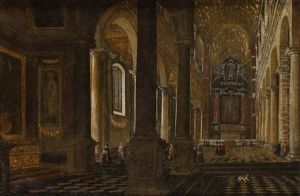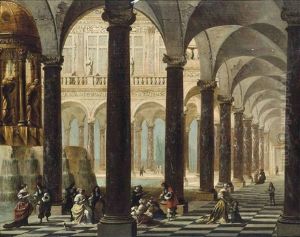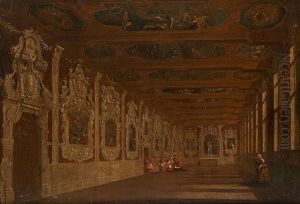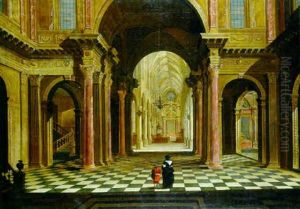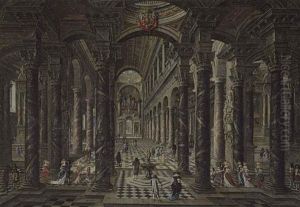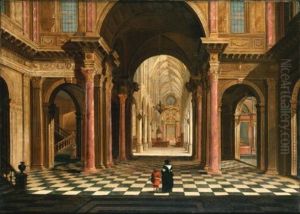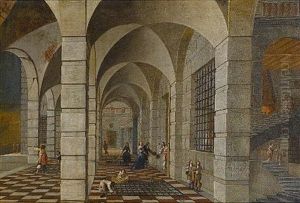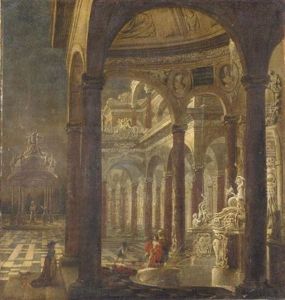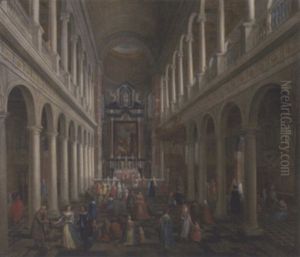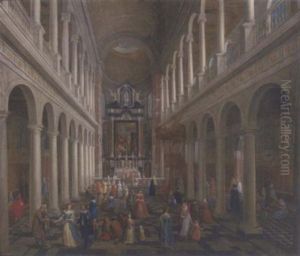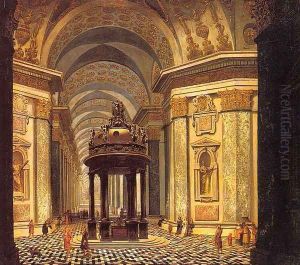Wilhelm Schubert van Ehrenberg Paintings
Wilhelm Schubert van Ehrenberg was a notable Flemish painter and draughtsman known primarily for his architectural paintings, particularly of churches and other grand buildings, which exemplify the Baroque style. Born in 1637 in Antwerp, then part of the Spanish Netherlands, Ehrenberg came from a background that was artistically enriched, which undoubtedly influenced his career path. He became a master in the Antwerp Guild of Saint Luke in 1662, marking his formal recognition as an artist of repute.
Ehrenberg's work often depicted the interiors of majestic buildings, imbued with a keen attention to detail and a mastery of light and shadow, which added a dramatic effect. His paintings not only showcased his skill in rendering architectural details but also his ability to infuse these spaces with a sense of grandeur and depth. He was also known for his collaborations with other artists, where he would paint the architectural elements, while figures were added by painters such as Hieronymus Janssens and Wilhelm Schubert van Ehrenberg.
Throughout his career, Ehrenberg's works were sought after by patrons across Europe, contributing to the spread of the Flemish Baroque style. His contributions to art were not limited to his own creations; he also had an impact on the next generation of artists, including his son, who followed in his footsteps. Wilhelm Schubert van Ehrenberg died in 1676 in Antwerp, but his legacy lives on through his contributions to the Baroque movement and his influence on the art of architectural painting.
